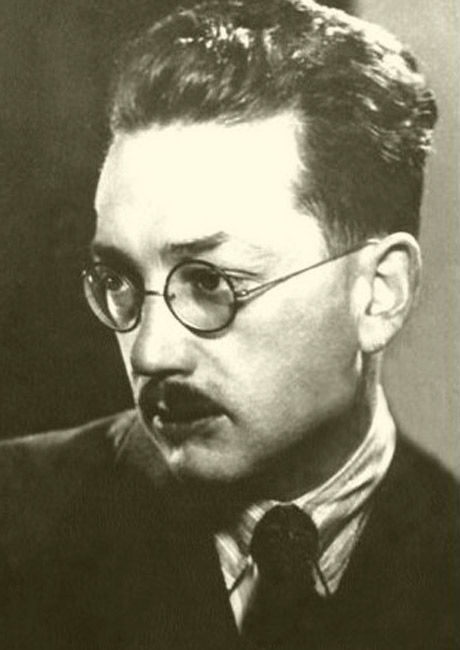
Jewish writers represented a significant part of the Romanian literary avant-garde. The internationalist spirit of the group promoted its affiliation with the European avant-garde, both in painting and in literature. Many of them emigrated, mainly to France, including Tristan Tzara, Benjamin Fondane, Ilarie Voronca, Gherasim Luca, and Claude Sernet. Both Tzara and Marcel Iancu were among the founders of the Dada movement in Zurich in 1916.
The Jewish poets who were attached to the avant-garde, edited and contributed to its journals, such as 75HP, Contimporanul, Integral, Alge and unu - the most tenacious promoter of the Romanian avant-garde, edited from 1928 by the poet Saşa Pană.
Modern Romanian poetry resorted quite frequently to themes of biblical inspiration, especially to Psalms. Such biblical motifs were present in Tudor Arghezi’s poetry, a non-Jew and one of the great interwar poets. His work influenced a number of Jewish poets, among them Felix Aderca, Camil Baltazar and who preferred biblical sources linked to Jewish mythology and to Jewish fate, alienation like Voronca, or to the magical world of the shtetl like Fondane. Biblical prototypes can be detected also in the works of Enric Furtună, A. Dominic, Maria Banuş, and Marcel Breslaşu, and references to kabalistic symbols can be found in the work of the poet Paul Păun.
Jewish writers that were active in the 1930s made a remarkable contribution to Romanian modernism, among them Paul Păun, Jacques Costin ,Sesto Pals, Liviu Deleanu, Mihail Dan, and Aurel Baranga. Avant-garde Jewish writers were drawn to expressionist and introspective styles. Their tendency to perceive reality acutely and to stress individual emotions was intensified by their feeling of alienation as Jews. An outstanding representative of modernist prose was Max Blecher, whose novels, Intâmplări în irealitatea imediată (Events from the Close Unreality), and Inimi cicatrizate (Scarred Hearts) both published in 1936, display a highly refined style depicting inner life and a hallucinatory perception of the surrounding world.
The Jewish environment, shaken by the changes accompanying capitalism and modernization, was reflected in the work of three important writers: Ion Călugăru, Ury Benador, and Isac Peltz, the first two of whom were themselves natives of Moldavian Jewish market towns. They developed powerful realist representations, often with expressionist visions, of the charming or sordid universe of Jewish market towns in Copilăria unui netrebnic (A Wretched Man’s Childhood,1936) by Călugăru, and pitiless descriptions of the predatory big cities Calea Văcăreşti (The Văcăreşti Road, 1933) by Peltz and Benador's Veac XX (Ghetto Twentieth Century, 1934).
The modern Jewish “ghetto” did not preserve the mythical charm of the childhood market town, but became an alienating environment, destroying aspiration and ideals, populated by characters disfigured by the harshness of human relations and the loss of moral values, and suffocated by poverty .
In the tradition launched by Ronetti-Roman, several Jewish writers published essays on Judaism, on the nature of anti-Semitism and on the dilemmas of double identity, among them, Zissu, Fondane, Relgis, Mihail Sebastian, Aderca and Benador.
Alexandru Mirodan, Dicționar neconvențional al scriitorilor evrei de limbă română, 2 vols. Tel Aviv, 1986–1997
Leon Volovici, Nationalist Ideology and Antisemitism: The Case of Romanian Intellectuals in the 1930s, trans. Charles Kormos , Oxford, 1991
A. B. Yoffe, Be-Sadotzarim: Sofrim yehudim be-Romanyah, 1880–1940,Tel Aviv, 1996, abstract and table of contents also in English